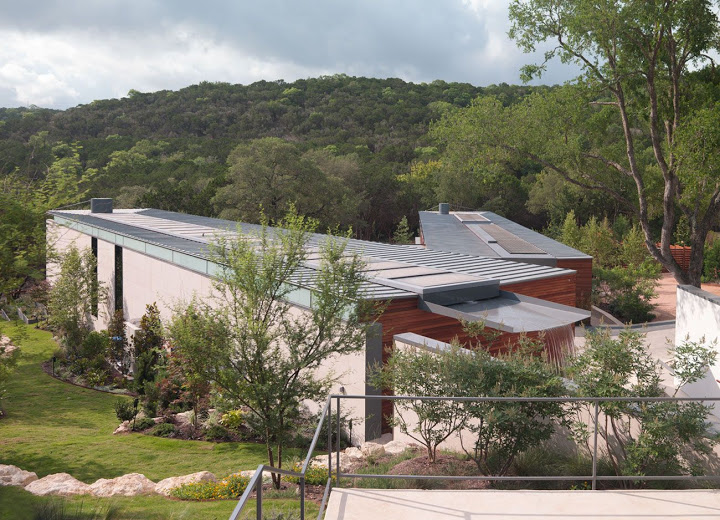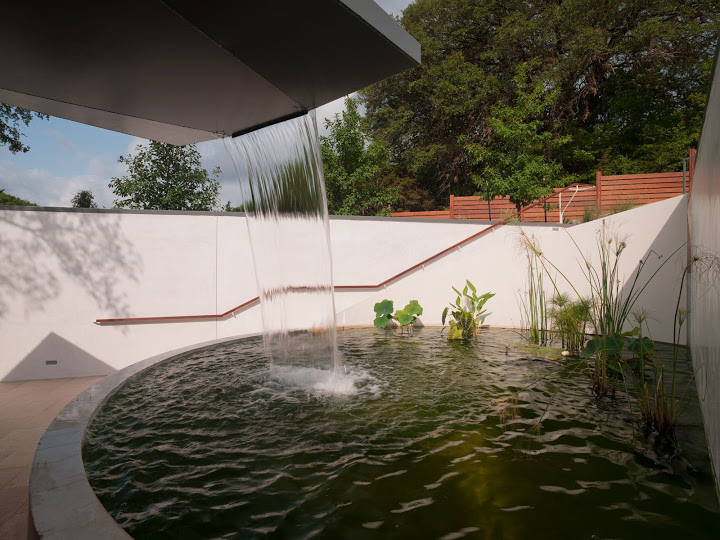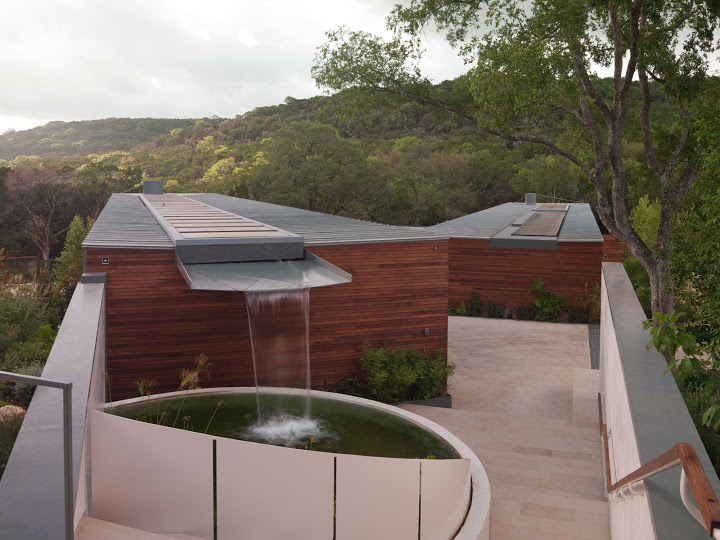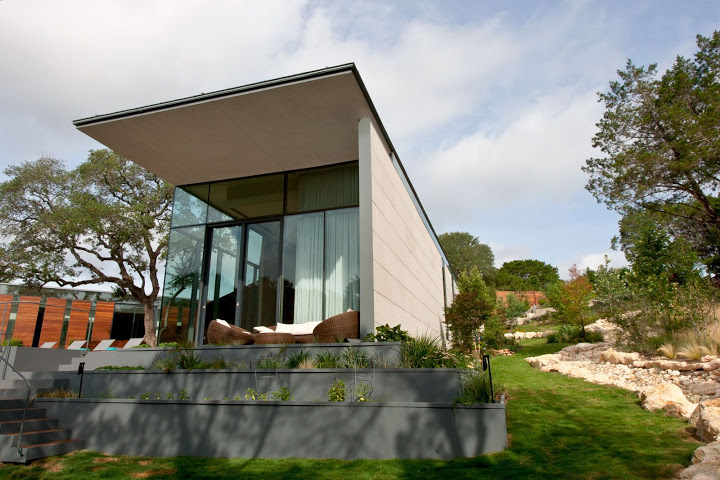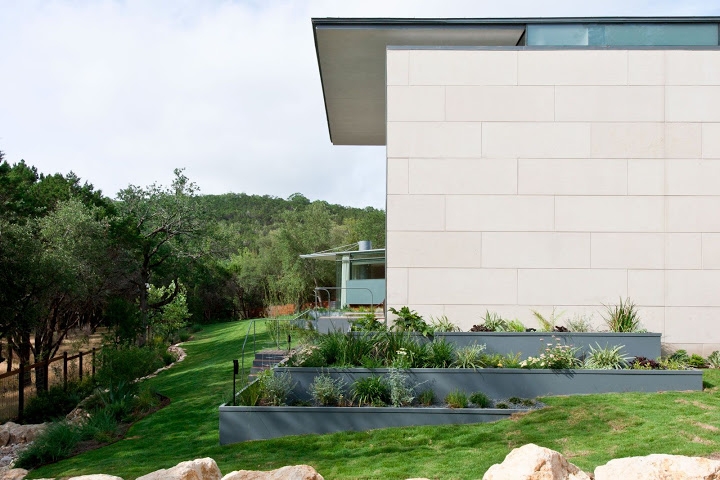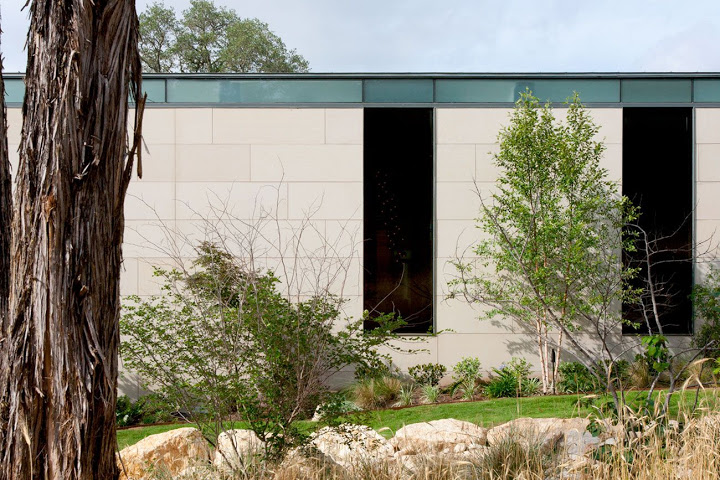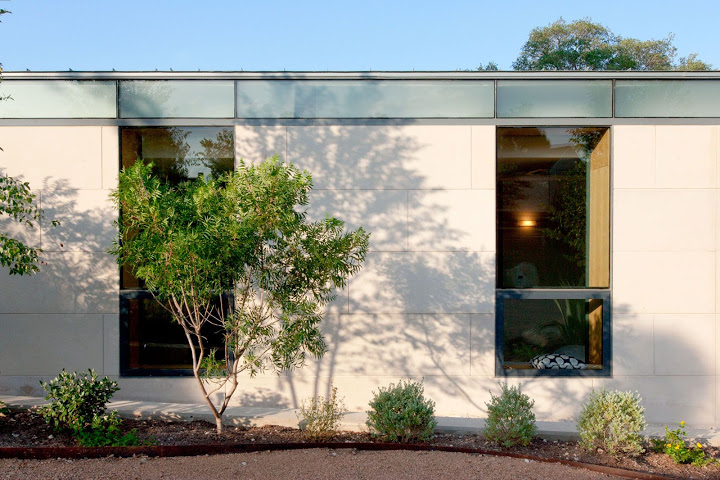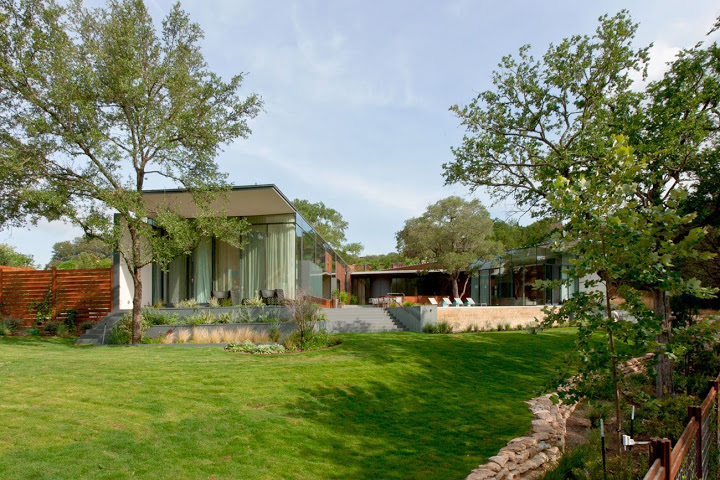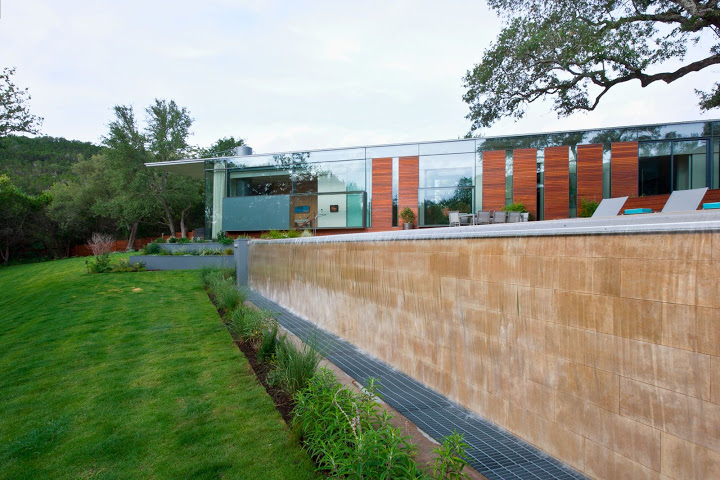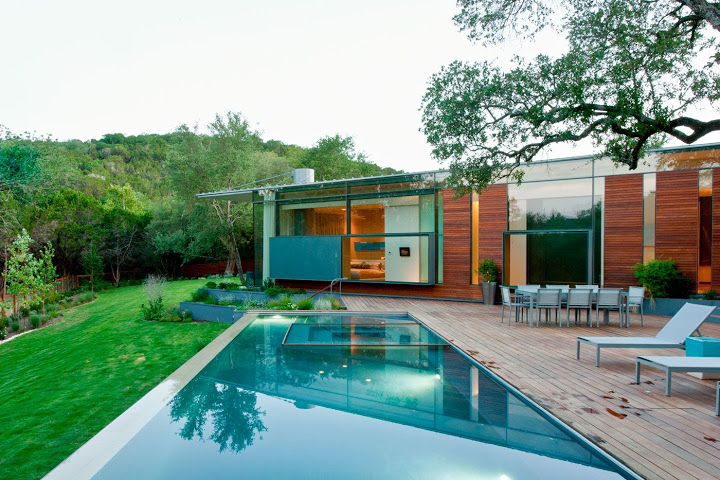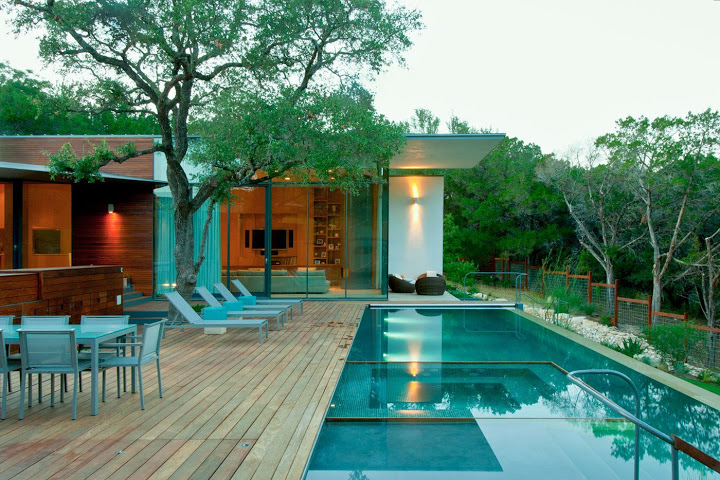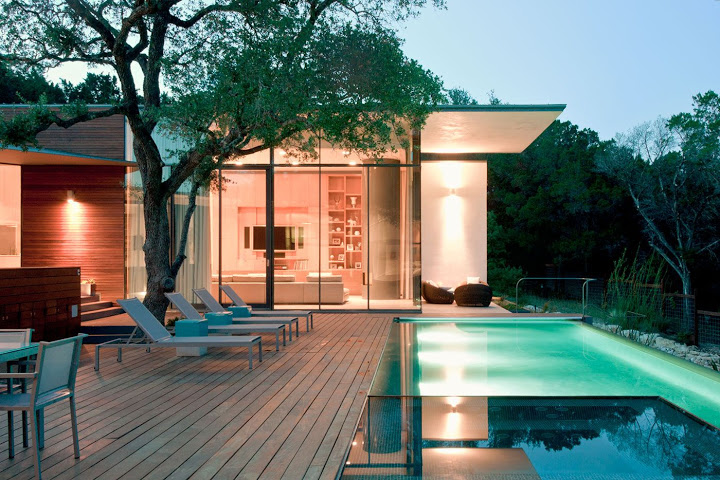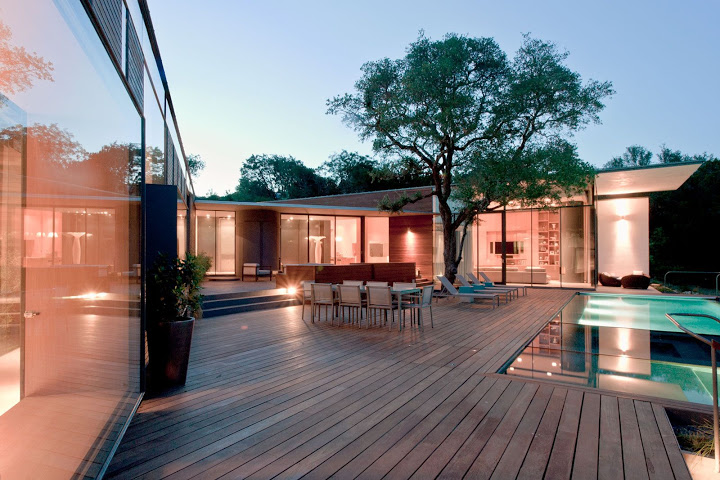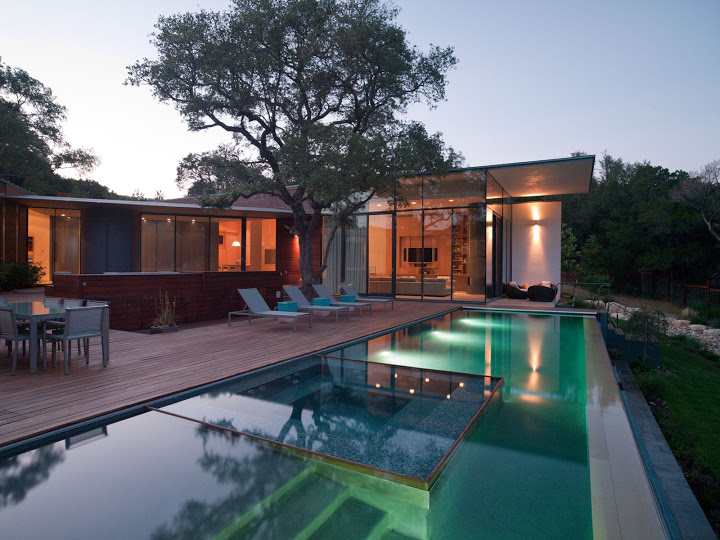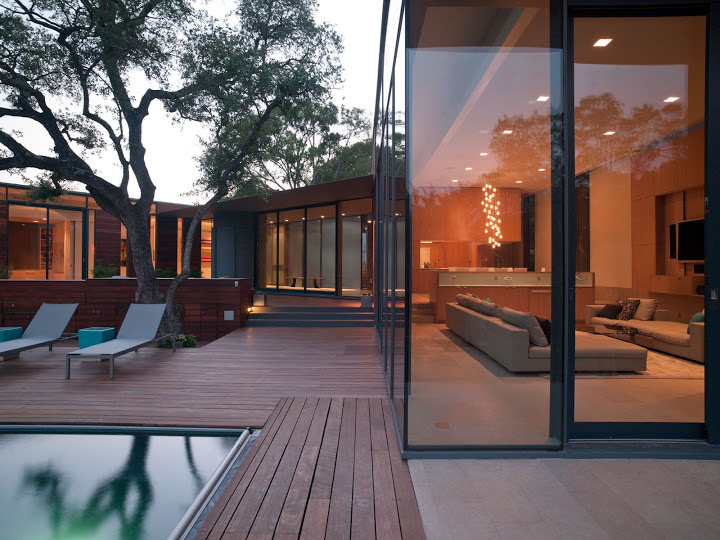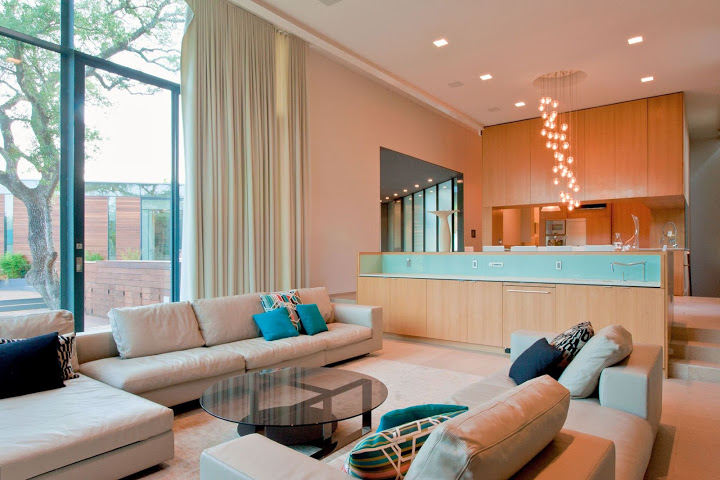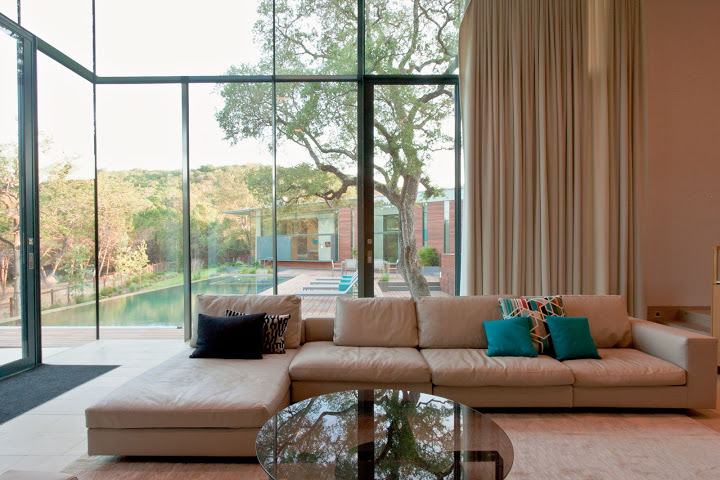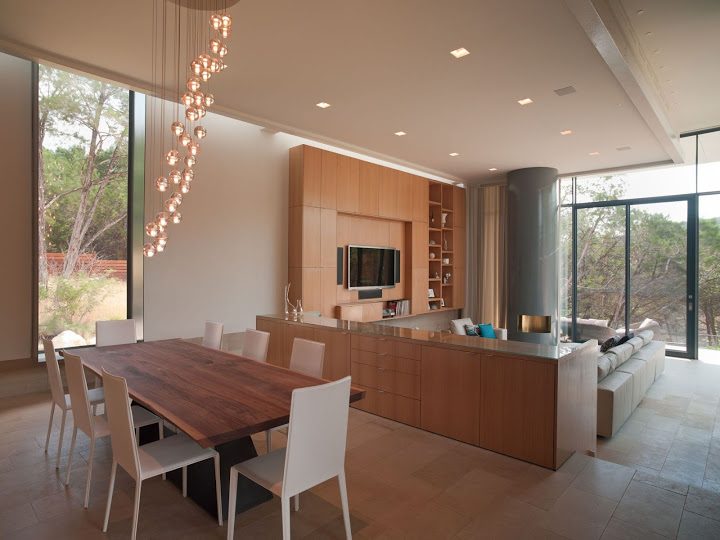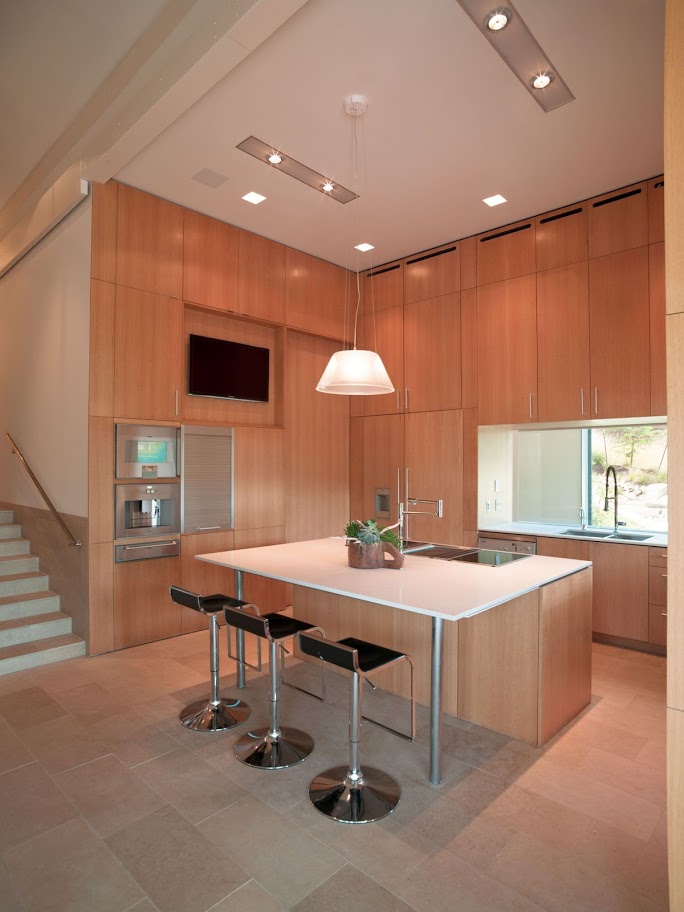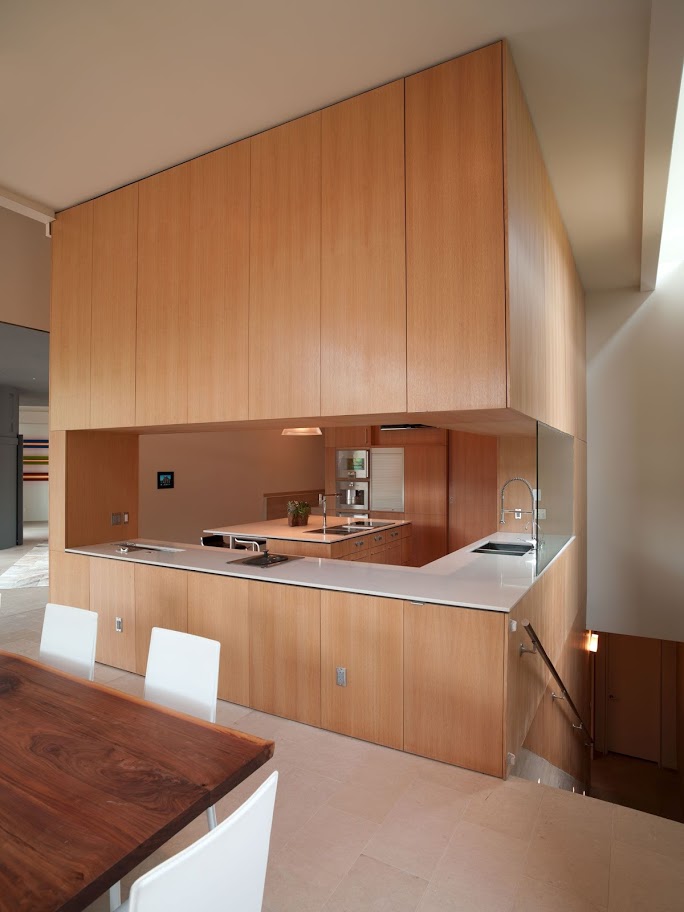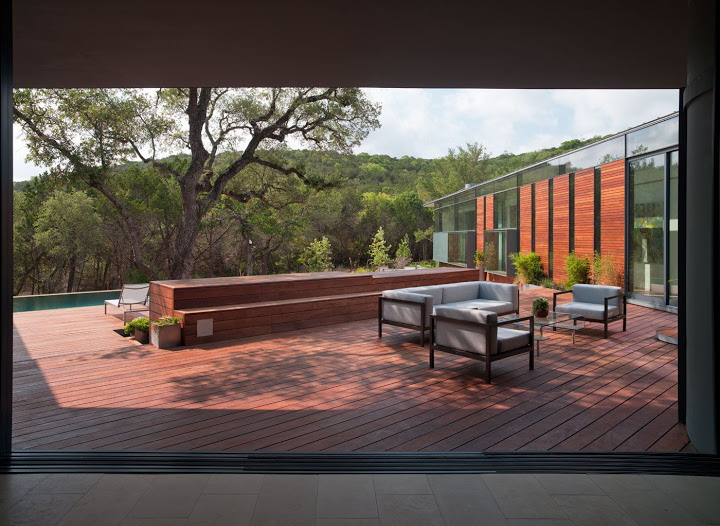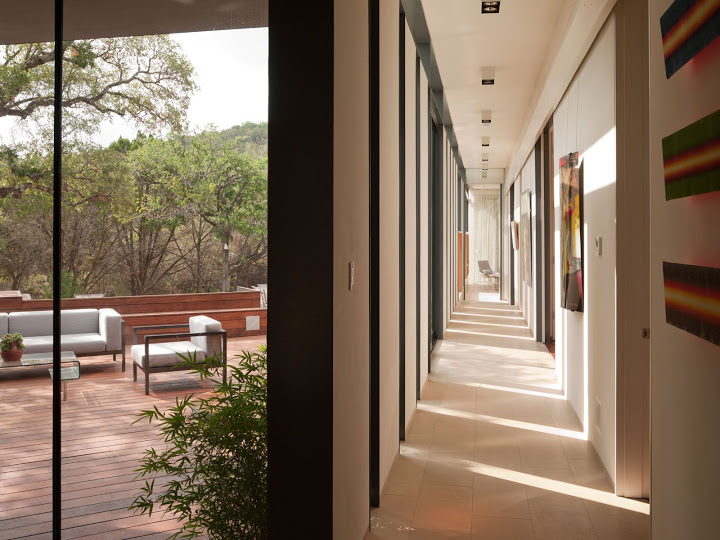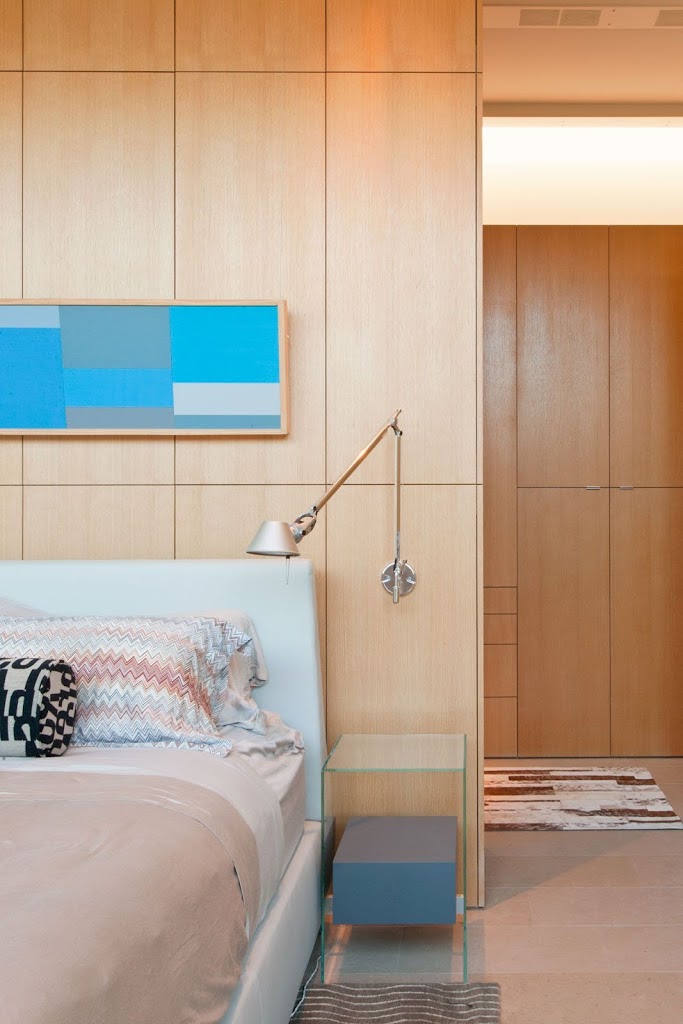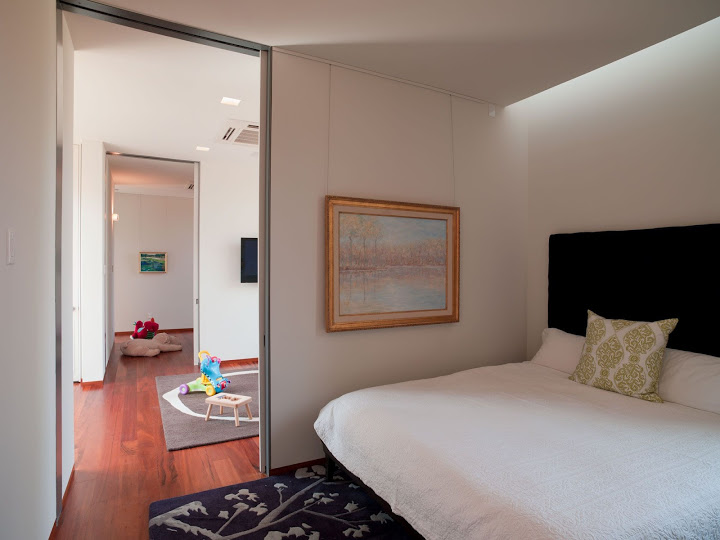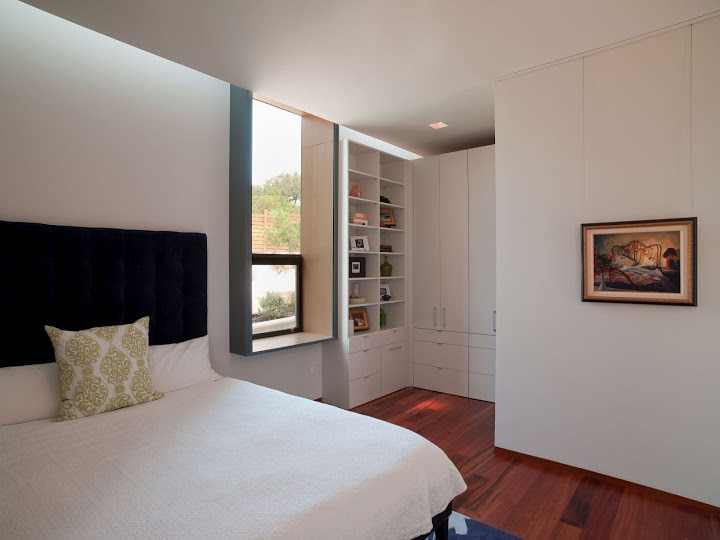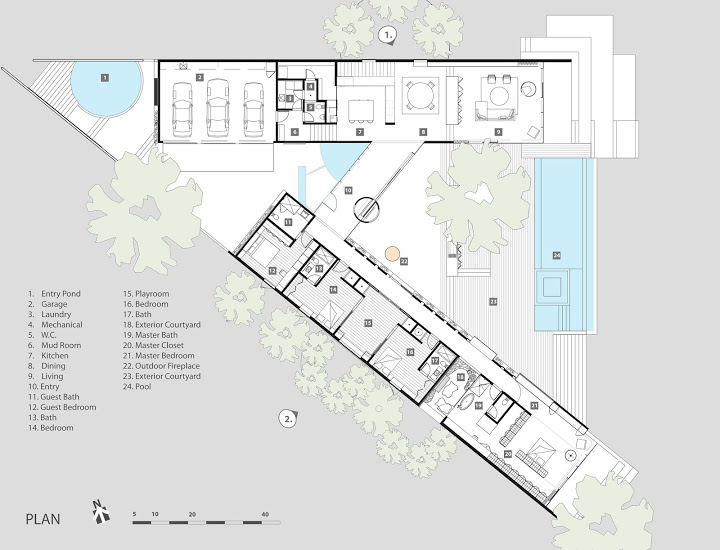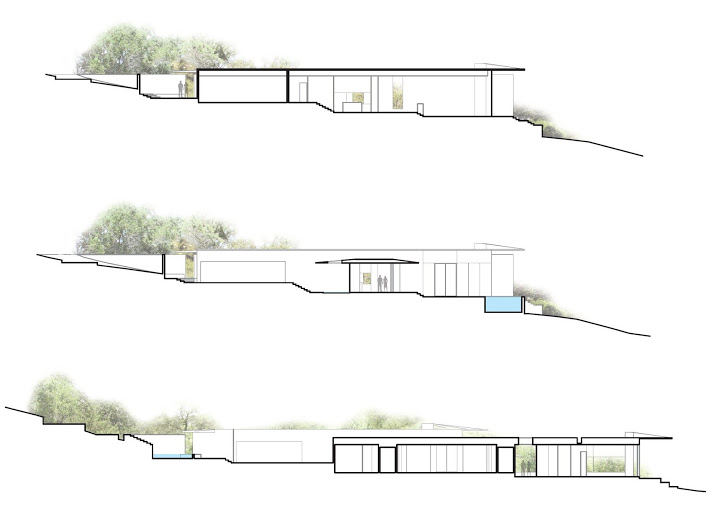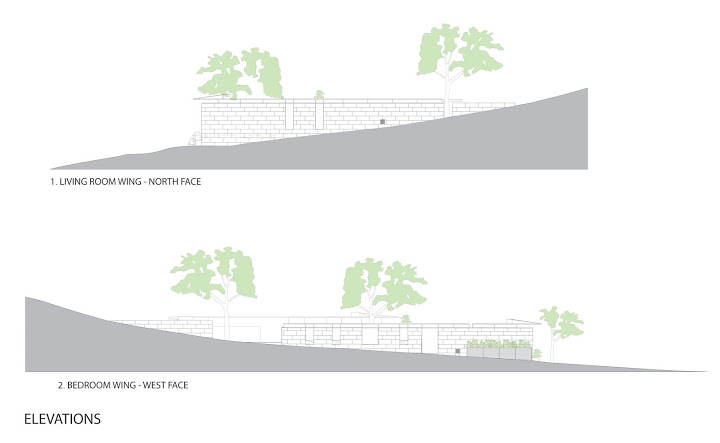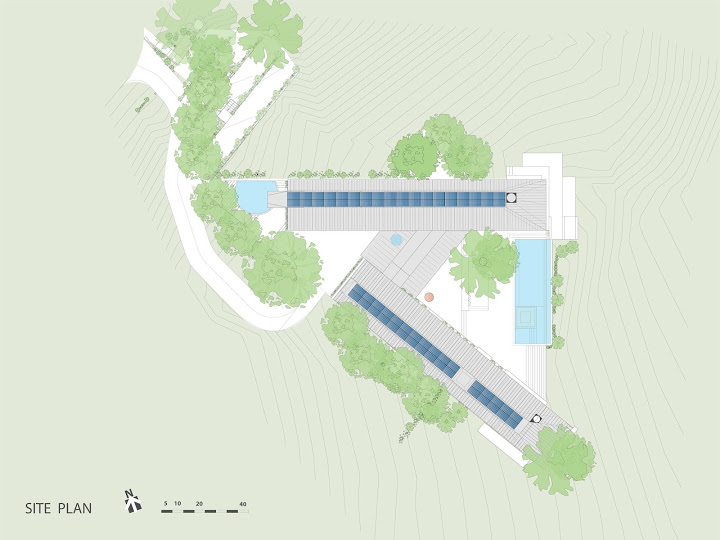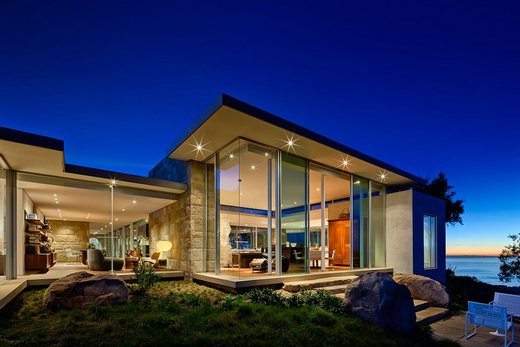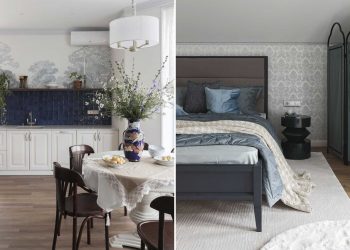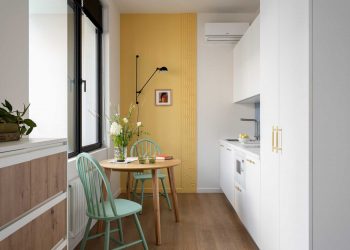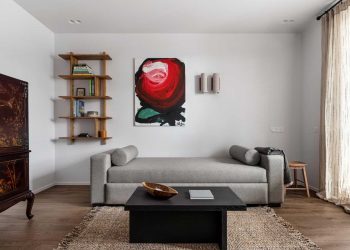A Bercy Chen Építész Stúdió tervezte a Cascading Creek Házat, egy 1100nm-es modern családi otthont, mely többféle zöld technológiát vonultat fel az energiatakarékosság jegyében – fotovoltaikus napenergia-hasznosítást, esővíz gyűjtő rendszert, hidronikus fűtést és hűtést.
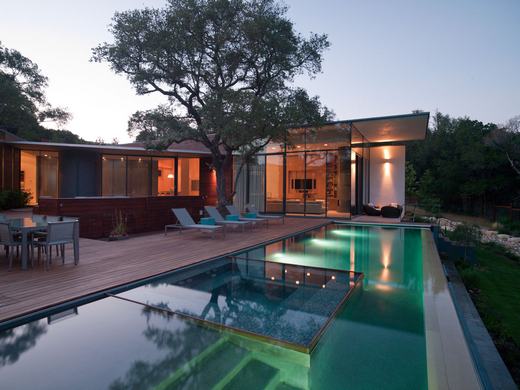
A Bercy Chen Építész Stúdió tervezte a Cascading Creek Házat, egy 1100nm-es modern családi otthont, mely többféle zöld technológiát vonultat fel az energiatakarékosság jegyében – fotovoltaikus napenergia-hasznosítást, esővíz gyűjtő rendszert, hidronikus fűtést és hűtést. A ház koncepciójában a divat kevésbé játszott szerepet, az épület inkább szinte Texas mészkő víztartó rétegeinek kivetülése. A ház teteje az esővíz gyűjtésére lett tervezve és kialakítva. A vízgyűjtő rendszer egyben a napenergiát is hasznosítja fotovoltaikus napelemekkel, melegvíz panelekkel. A tetőn összegyűjtött víz, az elektromos áram és a hő egy központi klíma rendszerben futnak össze, mely a ház fűtéséről és hűtéséről is gondoskodik.
Bercy Chen Studio have designed the Cascading Creek Housea, a single-family residence in rural Texas, USA. Recently completed, this 11,796 square foot contemporary home incorporates multiple green system components including photovoltaics, rainwater collection and hydronic heating and cooling.
Cascading Creek House was conceived less as a house and more as an outgrowth of the limestone aquifers of the Central Texas geography.
The roof is configured so as to create a natural basin for the collection of rainwater, not unlike the vernal pools found in the outcroppings of the Texas Hill Country. These basins harness additional natural flows through the use of photovoltaic and solar hot-water panels. The water,electricity and heat which are harvested on the roof tie into an extensive climate conditioning system which utilizes water source heat pumps and radiant loops to supply both the heating and cooling for the residence. The climate system is connected to geothermal ground loops as well as pools and water features thereby establishing a system of heat exchange which minimizes reliance on electricity or gas.
Beyond the technological, the form and siting of the house subtly addresses the social issuesof American suburbia. The surprisingly low profile of the house in relation to the street offers a critical alternative to the morphology of massive suburban homes in Texas—one looks down upon the water-collecting roofs of the house upon entering from the street. In contrast to the unassuming face towards the street, the residence presents itself generously towards the wilderness below, embracing nature without overwhelming it.
The primary formal gesture of the project inserts two long native limestone walls to the sloping site, serving as spines for the public wing and private wing of the house. The walls and the wings they delineate shelter a domesticated landscape that serves as an extended living space oriented towards the creek below and protected from the torrents of water draining from the street above during sudden downpours characteristic of the area. The siting of the boundary walls and building elements was informed by the presence and preservation of three mature native oaks.
Against the constant datum of the imperceptibly sloping roof, the floor terraces along the contour of the land to define the interior into discrete spaces increasing in volume height away from the relative compression of the entry hall. Each wing of the house terminates with the roof cantilevered from a single column that frees up the exterior walls to be fully glazed, flooding the tall and open volume of the living room with daylight and offering generous views of the pool deck and the wooded silhouettes of the Texas Hill Country beyond.
Fotók: Paul Bardagjy és Ryan Michael | Forrás: Bercy Chen Studio



